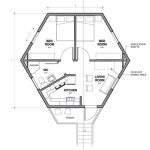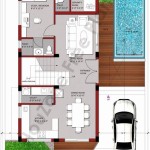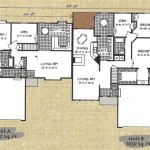AutoCAD Floor Plan Tutorial for Beginners
AutoCAD, a software application for 2D and 3D computer-aided design (CAD) and drafting, is widely used by architects, engineers, and construction professionals to create precise drawings. This tutorial provides a comprehensive introduction to drawing a basic floor plan in AutoCAD, suitable for beginners. It covers fundamental AutoCAD commands and techniques essential for creating accurate and professional floor plans.
Before beginning, ensure that AutoCAD is installed and running on the computer. Familiarize yourself with the AutoCAD interface, including the ribbon, command line, and drawing area. Understanding the interface is crucial for efficient workflow. The ribbon, located at the top of the screen, houses various tools and commands organized into tabs. The command line, typically located at the bottom of the screen, allows users to input commands directly. The drawing area is the primary space where the floor plan will be created.
Setting Up the AutoCAD Environment
The initial step involves setting up the AutoCAD environment for architectural drawings. This includes configuring units, limits, and layers. Proper setup ensures accuracy and organization throughout the drawing process.
First, establish the units of measurement. Type "UNITS" in the command line and press Enter. A dialog box will appear. In the "Drawing Units" section, select the desired unit of measurement, such as "Architectural" for feet and inches or "Decimal" for metric units. Set the precision to a suitable level for architectural drawings, typically 1/16" for architectural units or 0.00 for decimal units. Click "OK" to save the settings.
Next, define the drawing limits. Limits define the virtual boundaries of the drawing area. Type "LIMITS" in the command line and press Enter. The command line will prompt for the lower-left corner; enter "0,0" and press Enter. Then, the command line will prompt for the upper-right corner. Enter appropriate coordinates based on the anticipated size of the floor plan. For instance, if the floor plan is expected to be 50 feet by 40 feet, enter "50',40'" (or the metric equivalent) and press Enter. After setting the limits, type "ZOOM" in the command line, press Enter, and then type "A" (for All) and press Enter to ensure the entire drawing area is visible.
Layers are crucial for organizing different elements of the floor plan. Create layers for walls, doors, windows, furniture, and other components. To create layers, type "LAYER" in the command line and press Enter. The Layer Properties Manager will appear. Click the "New Layer" icon (looks like a stack of papers with a sun) to create a new layer. Name each layer descriptively, such as "Walls," "Doors," "Windows," "Furniture," and "Dimensions." Assign a color and linetype to each layer for visual distinction. For example, walls might be drawn in a dark color with a continuous linetype, while furniture might be drawn in a lighter color. Ensure the appropriate layer is active before drawing each element.
Drawing the Walls
The foundation of any floor plan is its walls. Accurately drawing the walls is essential for establishing the overall layout. AutoCAD provides several commands for drawing lines and polylines, which are used to represent walls.
Begin by activating the "Walls" layer. Use the "LINE" command to draw individual wall segments. Type "LINE" in the command line and press Enter. The command line will prompt for the first point. Click on the desired starting point in the drawing area or enter coordinates. Then, click on the next point or enter coordinates to define the length and direction of the wall segment. Continue drawing wall segments until the entire outline of the building is complete. Ensure that the lines are connected accurately to form closed shapes. The "ORTHO" mode (activated by pressing F8) can be helpful for drawing perfectly horizontal or vertical lines. This ensures that walls are drawn at right angles, which is typical in architectural design.
Alternatively, the "PLINE" (polyline) command can be used to draw a continuous line consisting of multiple segments. Type "PLINE" in the command line and press Enter. Follow the same procedure as with the "LINE" command, clicking on points or entering coordinates to define the segments. The advantage of using the "PLINE" command is that all segments are treated as a single object, making it easier to select and manipulate the entire wall outline. After completing the outline, type "C" (for Close) and press Enter to close the polyline and form a complete shape.
To represent the thickness of the walls, use the "OFFSET" command. Type "OFFSET" in the command line and press Enter. The command line will prompt for the offset distance. Enter the desired wall thickness, such as "6" for 6 inches, and press Enter. Then, select the line or polyline representing the wall outline. Click on the inside or outside of the outline to specify the direction of the offset. The "OFFSET" command creates a parallel line at the specified distance, effectively representing the wall thickness. Use the "TRIM" command to clean up any overlapping or extending lines at the corners of the walls. Type "TRIM" in the command line and press Enter. Select the cutting edges (the lines to trim to) and press Enter again. Then, click on the portions of the lines that need to be removed.
Adding Doors and Windows
Doors and windows are essential elements of a floor plan, providing access and natural light. Accurately placing and representing doors and windows is crucial for creating a functional and realistic design.
Before inserting doors and windows, create separate layers for each. Activate the "Doors" layer and use the "LINE" command to draw the door openings. Indicate the door width and swing direction. Standard door widths are typically 30 inches, 32 inches, or 36 inches. Draw a line representing the door swing using the "ARC" command or the "CIRCLE" command followed by trimming. The swing typically extends 90 degrees or 180 degrees from the door jamb. Use consistent symbology for doors to ensure clarity and readability. For example, a common representation includes a line indicating the door thickness and an arc indicating the swing.
Similarly, activate the "Windows" layer and use the "LINE" command to draw the window openings. Indicate the window width and height. Standard window heights are typically 3 feet or 4 feet. Represent the window panes with additional lines within the opening. Consider the type of window (e.g., single-hung, double-hung, sliding) when drawing the window panes. Use consistent symbology for windows to distinguish them from doors. For instance, a common representation includes two or three parallel lines indicating the window panes.
To ensure accurate placement of doors and windows, use reference points such as wall corners or centerlines. The "OSNAP" (object snap) settings can be helpful for snapping to specific points on existing objects, such as endpoints, midpoints, and intersections. To access the "OSNAP" settings, type "OSNAP" in the command line and press Enter. A dialog box will appear, allowing users to select the desired snap points. Common "OSNAP" settings for architectural drawings include Endpoint, Midpoint, Center, Intersection, and Perpendicular. By using "OSNAP", it is possible to accurately position doors and windows relative to the walls and other elements of the floor plan.
Often, pre-drawn door and window blocks will be created and saved to a library file. This can be done to allow easy insertion and replication of these elements for faster floor plan creation. The steps would be identical for each element as described above, but the block can then be saved as a single element. These blocks can also be customized by the user as required.
Further refinement of the floor plan may include adding details such as furniture, fixtures, and appliances. These elements should be placed on separate layers to maintain organization. Use existing AutoCAD blocks or create custom blocks for common furniture items. Add dimensions to the floor plan using the "DIMLINEAR" command and other dimensioning tools. Ensure that the dimensions are accurate and clearly indicate the sizes of rooms, wall lengths, and door and window openings.

Autocad Floor Plan Tutorial For Beginners 1

Making A Simple Floor Plan In Autocad Part 1 Of 3

Autocad Simple Floor Plan For Beginners 1 Of 5

Basic Floor Plan Drafting In Autocad 7 Steps Instructables

Basic Floor Plan Drafting In Autocad 7 Steps Instructables

How To Draw Floor Plans In Autocad Edrawmax

How To Draw Floor Plans In Autocad Edrawmax

Making A Simple Floor Plan In Autocad Fantasticeng

Making A Simple Floor Plan In Autocad Must Know Time Saving Tricks Shortcuts Cad Intentions

Making A Furniture Plan In Autocad 4 Steps Instructables








